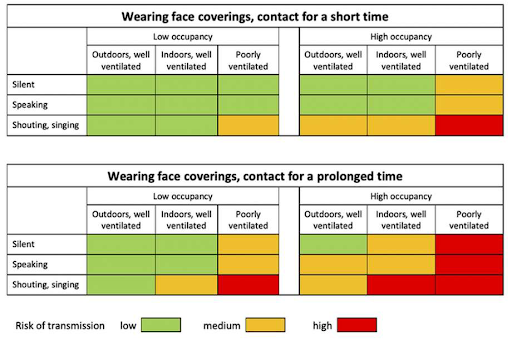How Can We Help?
Is the six foot (two meter) rule out of date? New thoughts on physical distancing.
Since the beginning of the Coronavirus pandemic, the 6-foot rule has been used as a guide to keep us safe, along with washing our hands and wearing masks. We know that the latter two will help prevent the spread of COVID-19, but a new study calls this “safe distance” to avoid spread into question. The CDC recommends the 6-foot buffer based on past studies of infection among healthcare workers for diseases known to be spread by respiratory droplets, such as influenza, as coronavirus is thought to primarily be spread in the same way. The WHO actually recommends even less — staying just 3 feet away from anyone who is coughing or sneezing, but after the SARS-CoV-2 breakout, the 6-foot distance became the standard guideline in the US. However, as early as March 26, there were studies suggesting that Coronavirus particles can actually travel up to 23-27 feet.
The new paper that was released just last week in the British Medical Journal finds that the 2-meter (6-foot) safe physical-distancing rule is “an oversimplification’ based on outdated science of past viruses.” Part of the trouble is that respiratory droplets are usually just categorized as large or small in studies, but in reality, the sizes are on a continuum, so it’s not simple to determine if they will travel far or evaporate and land within 3-6 feet. The other very important factor is air flow around the droplets. Thus they proposed a more nuanced model which assumes that everyone is asymptomatic or presymptomatic and assesses the risk of viral transmission as it relates to “the four Cs: close, closed, crowded, continuous.” Based on the four Cs, you can determine risk and thus should extend the distance beyond 6 feet if the risk is medium or high. The chart really explains the results best:

To simplify, if you or your loved ones have risk factors, it is safest to avoid any RED “high risk” situations and probably best to keep further distance than 6 feet in any YELLOW “medium risk” situations. That said, most importantly note that there is not a “no risk” classification here. You can make choices to limit your risk, but you cannot easily eliminate it if you are around others. Be safe, wash your hands, wear a mask, and keep your distance…maybe a bit more than 6 feet!
Written by:
Prerana Sangani, MD, September 2, 2020
Swarthmore College (undergrad)
University of Rochester (med school)
UC Berkeley (MPH)
California Pacific Medical Center (residency)


